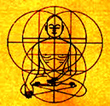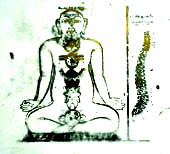yogaveda.com
Yoga

A Science Of Mind,
Body & Spiritual Maintenance
&
Development
Südstern
Yoga A Path To Health
 "Thousands
of research studies have shown that in the practice of yoga, a person
can learn to control such physiologic parameters as blood pressure, heart
rate, respiratory function, metabolic rate, skin resistance, brain waves,
and body temperature, among other body functions," states
Robert Rose, MD, executive director at the MacArthur Foundation's Initiative
on mind, brain, body, and health research.
"Thousands
of research studies have shown that in the practice of yoga, a person
can learn to control such physiologic parameters as blood pressure, heart
rate, respiratory function, metabolic rate, skin resistance, brain waves,
and body temperature, among other body functions," states
Robert Rose, MD, executive director at the MacArthur Foundation's Initiative
on mind, brain, body, and health research.
ONE OF THE OLDEST health practices, yoga (which means "union" in Sanskrit) is the integration of physical, mental, and spiritual energies to promote health and wellness. Yoga is based on the Hindu practice of mind-body unity: that a chronically restless or agitated mind will result in poor health and decreased mental clarity. Practitioners believe that yoga can combat these effects and restore good mental and physical health.
The basic components of yoga are proper breathing, movement, and posture. While practicing specific postures, you have to pay close attention to your breathing and exhale, then inhale, at certain times. The breathing techniques are believed to help maintain the postures as well as promote relaxation and enhance the flow of vital energy known as prana.
The type of yoga most widely taught in the West today is hatha yoga. A unique combination of physical postures and exercises (known as asanas), breathing techniques (known as pranayama), relaxation, diet, and proper thinking, hatha yoga aims to cleanse the body of toxins, clear the mind, energize and realign the body, release muscle tension, and increase flexibility and strength.
According to Hindu belief, the goal of a properly executed asana is to create a balance between movement and stillness, which is the state of a healthy body. Although many of these postures require little movement, they all require concentration on the body's postures and movements. Practitioners say they can eventually learn to regulate their autonomic functions, such as heartbeat and respiratory rate, while reducing physical tensions.
Therapeutic uses
Aside from promoting relaxation and enhancing feelings of well-being, yoga also is widely used to relieve the pain and anxiety that often accompany certain chronic illnesses, such as heart disease, diabetes, migraine headaches, hypertension and arthritis.
Yoga has been credited with decreasing serum cholesterol levels and increasing histamine levels to fight allergies. Its ability to help practitioners regulate blood flow is being studied for possible use in cancer therapy. Scientists are eager to see whether restricting blood flow to a tumor region will slow its growth.
Yoga techniques can fit the needs of people in any physical condition from age 5 up; even those who can't do some of the more physically demanding postures can benefit from the breathing or meditative techniques.
Indications for yoga
Many studies have shown yoga's effectiveness as a complementary therapy for anxiety, obesity, alcoholism, and tobacco addiction; for menopause, menstrual problems, and premenstrual tension; for arthritis and rheumatism, back and neck pain, insomnia, migraine headaches, and nerve or muscle disease; for heart disease and hypertension; for asthma and bronchitis; and for cancer, diabetes, duodenal ulcers, and hemorrhoids.
Source:
Nurse's Handbook of Alternative & Complementary Therapies, Springhouse
Corp., 1999.